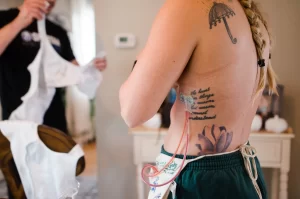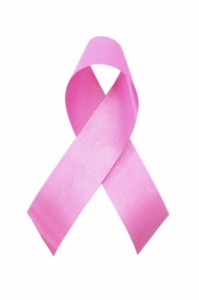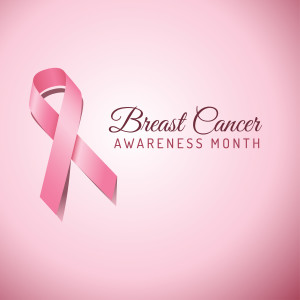By Iris Farrou
05 Oct, 2022
Breast Cancer, Breast health, Lifestyle Tips, Prevention, Queer Health, Women's Health, Young adults & teens
Breast cancer, Breast cancer awareness month Buffalo, Breast Cancer Treatments, Breast Care Treatment Buffalo NY, Mammogram Buffalo NY, New Treatments for Breast Cancer 2022
Thinking about breast cancer treatments is undoubtedly not the most enjoyable activity
one can engage in, but knowing your options can be a revealing and empowering experience. If
you have been diagnosed with breast cancer, it is very likely you will have one or more of these
experts in your treatment team: a breast surgeon or surgical oncologist, who is a doctor
specializing in surgery to topically treat breast cancer; a radiation oncologist, who specializes in
using radiation against breast cancer–also a topical treatment.

Some other experts, who focus more on systemic treatments, are a medical oncologist–a doctor who uses chemotherapy,
hormone treatment, immunotherapy, and other medicines to battle cancer and a plastic surgeon
who–as you may know–is there to reconstruct or repair parts of the body.
Local, or topical, treatments treat the tumor without affecting the rest of the body; surgery
and radiation are local treatments. Depending on the type of breast cancer, its stage, and your
overall health, you may need other types of treatment as well (before or after surgery, or both):
those are called systemic treatments because they reach cells almost anywhere in the body.
Systemic treatments can be given by mouth, put into the bloodstream, or injected in a muscle.
2022 has been a great year for breast cancer treatment, as the FDA approved a new drug
to treat HER2-Low Breast Cancer: trastuzumab deruxtecan (T-DXd). The approval came
through on August 5, 2022 and this therapy is meant to help patients who suffer from HER-2-
Low Breast Cancer that has spread to other parts of the body and cannot be surgically removed.
The clinical trial results for T-DXd were presented by medical oncologist Shanu Modi to this
year’s American Society of Clinical Oncology meeting. The clinical trial was led by Memorial
Sloan Kettering Cancer Center, and according to Dr. Modi, its results redefine how many
patients with metastatic cancer will be treated.
Targeted therapy works by identifying and attacking certain types of cancer cells, but it
doesn’t kill normal cells so its side effects are fewer than other treatments. However, until now
HER2 treatment has not been successful in treating cancer that is HER2-low. During the trial,
patients were given Enhertu (or T-DXd) which targets the protein HER2. The patients who
received Enhertu did noticeably better than the patients who received standard chemotherapy!
The new targeted drug held the cancer of the receivers in check nearly twice as long, and also
increased the survival rate by 35%.
This is wonderful news for breast cancer patients, and a great advancement in breast
cancer research and treatments! To consider if this is the right treatment for you, ask your
medical professional, and seek as much information as possible before you make a decision.
More
 Americans across the country have embraced October as Breast Cancer Awareness month. Many of us spend the month of October wearing pink bracelets, signing-up for 5K runs, and watching professional athletes incorporate pink gear into their uniforms. Our heightened level of awareness and consideration of breast cancer and research funding is essential to finding a cure, but how many of us spend time in October considering our own health and potential risk for being diagnosed with the disease? This October, continue to wear your pink accessories and donate to your local fundraisers, but in honor of breast cancer awareness month, learn the warning signs and symptoms of breast cancer so that you can remain healthy too.
Americans across the country have embraced October as Breast Cancer Awareness month. Many of us spend the month of October wearing pink bracelets, signing-up for 5K runs, and watching professional athletes incorporate pink gear into their uniforms. Our heightened level of awareness and consideration of breast cancer and research funding is essential to finding a cure, but how many of us spend time in October considering our own health and potential risk for being diagnosed with the disease? This October, continue to wear your pink accessories and donate to your local fundraisers, but in honor of breast cancer awareness month, learn the warning signs and symptoms of breast cancer so that you can remain healthy too.
Signs and Symptoms
Thanks to advances in mammography screenings, most breast cancers in the United States are identified at an early stage before symptoms are visible. Still, not all cases of breast cancer are identified through mammograms, which is why it is important to understand the warning signs so that care can be sought as soon as possible. While symptoms can vary among women, the most common signs include:
- A lump, hard knot, or thickening inside the breast or underarm area.
- Swelling, warmth, redness or darkening of the breast.
- Isolated pain in the breast that does not go away.
- A change in the size or shape of the breast.
- A dimpling or puckering of the skin of the breast.
- A suddenly appearing nipple discharge, or a liquid leaking from your nipple, especially if it appears only in one breast, when no squeezing or pressure is applied to the breast, or if the discharge is bloody or clear, rather than milky.
- Itchy, scaly, or sore skin on the nipple, or a nipple rash.
- Pulling in of the nipple or other breast skin.
When conducting a self-breast exam, pay special attention to the presence of lumps or bumps, but understand that breast tissue is naturally textured, and some women’s breasts have more naturally occurring bumps than others. Look for an even and consistent amount of lumpiness throughout both breasts to determine if what you are feeling is your normal breast tissue, or something you should question. If you do find one isolated area with a solid, hard lump, take note and speak with your OBGYN or primary care doctor. By conducting routine exams on a monthly basis, you will be more in tune with your body in case you have a sudden, newly appearing lump that may be of concern.
When to Seek Care
Contact your OBGYN or primary care doctor if:
- You identify a lump that was not present during your prior month’s self exam or that you know is newly developed.
- You find a lump or a bumpy area on one breast that does not feel similar to your other breast.
- You find a lump or bumpy area on one breast that does not feel similar to the rest of the tissue on that same breast.
It is always in your best interest to seek guidance from a health care professional if you have any concerns about the signs or symptoms listed above. While your OBGYN may tell you that what you’ve found is normal, or that it is a benign breast condition such as a cyst or fibroadenoma, having the peace of mind of knowing that you are healthy will be well worth the exam.
More
 Cancer is a terrifying word. It seems beyond our control, but the truth is that there are ways to reduce your risk of developing the disease. This October, as we reflect on breast cancer awareness, prevention, and research, familiarize yourself with those factors that can increase your risk of breast cancer, and those that, for now, are simply myths.
Cancer is a terrifying word. It seems beyond our control, but the truth is that there are ways to reduce your risk of developing the disease. This October, as we reflect on breast cancer awareness, prevention, and research, familiarize yourself with those factors that can increase your risk of breast cancer, and those that, for now, are simply myths.
Fact: Exercise can reduce your breast cancer risk, as well as improve your overall health and wellness.
Myth: Though there have been concerns that parabens found in some body care products and cosmetics may increase the likelihood of cancer, research conducted to date has not concluded that exposure to parabens is a breast cancer risk factor. More research needs to be done on this topic, but for now, science has not been able to prove that parabens increase cancer risk.
Fact: Maintaining a healthy weight can reduce your breast cancer risk. It is especially important for breast cancer survivors to maintain a healthy weight as part of their continual recovery and prevention plan.
Myth: Though media reports have tried to link plastics to cancer over the past several years, there has been no scientific proof that exposure to plastics and Bisphenol A (BPA) can increase cancer risk. Despite reports that drinking water from a plastic bottle can increase the likelihood of breast cancer, it has not yet been scientifically proven.
Fact: In some studies, long-term or high levels of exposure to tobacco smoke have indicated increased risks of breast cancer, among other risk factors.
Myth: Secondhand smoke on the other hand, has not been definitively proven to increase the risk of breast cancer.
Fact: Limiting your consumption of alcohol can reduce your breast cancer risk.
Myth: There is also currently no data to support the theory that organic foods lower the risk of breast cancer.
Fact: Eating a healthy diet full of natural fruits and vegetables, healthy grains, good fats such as olive oil, chicken, fish, beans, and only limited amounts of red meat, can reduce the risk of breast cancer.
Other factors that are not known to increase the risk of breast cancer include:
- Abortion and miscarriage
- Exposure to certain types of pesticides and industrial chemicals
- Frequent use of bras with underwire
- Breast implants
- High consumption levels of caffeine
- Frequent use of cell phones
- Hair dyes and relaxers
- Frequent migraine headaches
- Breast trauma
Other factors under study that have not yet been intrinsically linked to increased breast cancer risk, but have also not been cleared from suspicion, include:
- Use of antibiotics
- Use of aspirin
- Birthweight
- Breast size
- Whether or not a woman was breastfed as an infant
- Use of fertility drugs
- Dairy products
- Dietary fat
- Soy
- Folic acid
- Multivitamins
- Levels of Vitamin D
- Meat consumption
- Frequency of skin moles
- High stress levels
With awareness of known risk factors and a commitment to leading a healthy lifestyle, you can put yourself in the best position to remain cancer free. Understand, however, that while these factors can increase or reduce your risk of cancer, there is no complete prevention strategy yet known. As women age, their risk of cancer inherently increases, but by living a healthy lifestyle, you can improve your chances of remaining cancer free as long as possible.
At Western New York OB-Gyn we are committed to helping our patients achieve optimal health and helping them discern between myths and facts. If you haven’t seen your doctor in more than a year, call today. We are currently accepting new patients at all of our locations.
More



